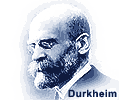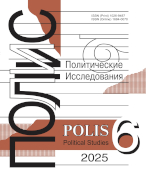In-Group and Out-Group in Russian Political Cartoons:
Research of the Latent Meanings of Narrative Conflict between Russia and the West
Melnikov S.S.,
autonomous non-profit educational organization “New School”, xmelnikov@gmail.com
DOI: 10.17976/jpps/2018.02.08
Melnikov S.S. In-Group and Out-Group in Russian Political Cartoons: Research of the Latent Meanings of Narrative Conflict between Russia and the West. – Polis. Political Studies. 2018. No. 2. https://doi.org/10.17976/jpps/2018.02.08
The article examines the invariant contents of Russian political cartoons, the representation of actual political processes in it and, most significantly, the implicit or masked aspects of sociopolitical life identified via content analysis of the caricature image. The author claims that the virtualization of politics has given humor an additional significance for contemporary political discourse. Despite the emergence of new genres, professional cartoons in the media are still the static-visual humor direction most in demand. Plots of political cartoons as well as of political humor in general often reflect conflict episodes of the relationship between in-group (for the artist and audience) and out-group. This is also true for the Russian cartoons, given the relatively high importance of state, cultural and national identity for Russian collective identity. As shown by the comparative-historical analysis, the representation of conflicts between Russians as in-group and the West / representatives of Western societies as out-group is typical for Russian cartoons. The profound meanings of the reflection of Russian cartoonists over this antagonism and the dynamics of the concentration on it are studied by the method of content analysis. This study revealed that since the “perestroika” time the interest to represent Western political actors in cartoons has decreased – the domestic events and processes became a priority. The attractiveness of the in-group representation declines over time, which indicates a more critical attitude to the Russian internal problems. With a greater overall attractiveness of Russian in-group, it is important to note that, as a result of content analysis, out-group representatives are shown as more impressive and presentable. The transfer of the in-group and the out-group antagonism from the foreign policy field to the internal policy field which is characteristic of the last decades, coupled with the polar ideological orientation of contemporary Russian cartoonists (including the attitude toward the West), indicates a low consolidation of Russian society.
References
Barabanov O.N. After Crimea: Visual Grotesque of the Russian Social Media. – Russia in Global Affairs. 2014. No. 3 (In Russ.). URL: http://globalaffairs.ru/ukraine_crysis/Posle-Kryma-vizualnyi-groteskrossiiskikh-sotcialnykh-media-16683 (accessed 18.08.2017).
Bell P. Content Analysis of Visual Images. – The Handbook of Visual Analysis. Ed. by T. van Leeuwen, C. Jewitt. London: SAGE Publications Ltd. 2001. P. 10-35.
Bourdieu P. Giving Voice to the Voiceless. – P. Bourdieu. Political Interventions: Social Science and Political Action. London: Verso. 2008. P. 70-78.
Bukreeva O.V. Image of the Russian Power and of Political Leaders in the Conceptual Space of Demotivation Posters. – Polis. Political Studies. 2011. No. 5. P. 117-122 (In Russ.) URL: http://www.politstudies.ru/en/article/4467
Dmitriev A.V. Sotsiologiya politicheskogo yumora: ocherki [Sociology of Political Humor: Essays]. Moscow: ROSSPEN. 1998. 332 p. (In Russ.)
Fokina М.A. Demotivators in Russia and in the USA: an Attempt at Comparative Analysis. – VESTNIK of Nizhny Novgorod Linguistics University. 2012. No. 20. P. 74-85. (In Russ.)
Gocek F.M. Political Cartoons in the Middle East. Princeton: Markus Wiener Publishers. 1998. 155 p.
Golikov A.G., Rybachenok I.S. Smekh – Delo Ser’eznoe. Rossiya I Mir Na Rubezhe XIX-XX Vekov V Politicheskoi Karikature [Laughter Is A Serious Matter. Russia and The World At The Turn Of The 19th And 20th Century]. Moscow: Institute of Russian History RAS. 2010. 328 p. (In Russ.)
Gorshkov M.K. Оn the Influence of Non-Economic Factors on the Socio-Economic Development of the Society. – Gumanitarii Yuga Rossii. 2015. No. 1. P. 15-25. (In Russ.)
Goryaeva T.M. Politicheskaya Tsenzura v SSSR. 1917-1991 gg. [Political Censorship in the USSR. 1917-1991]. Moscow ROSSPEN. 407 p. (In Russ.)
Hobbes Т. Leviathan. (Russ. ed.: Hobbes T. Leviafan. Мoscow: Mysl’. 2001. 478 p.)
Ioffe М. Desyat’ Ocherkov O Khudozhnikakh-Satirikakh [Ten Essays on Satirical Artists]. Moscow: Sov. Khudozhnik. 1971. 296 p. (In Russ.)
Kazanevskii V.А. Iskusstvo Sovremennoi Karikatury [The Art of Modern Cartoon]. Kiev: Al’terpress. 2004. 152 p. (In Russ.)
Kuipers G. Sociology of Humour. – The Primer of Humour Research. Ed. By V. Raskin. Berlin, New York: Mouton de Gruyter. 2008. P. 366-423.
Lukin A.V. Chauvinism or Chaos: Russia’s Unpalatable Choice. – Polis. Political Studies. 2014. No. 3. P. 159-171. (In Russ.) https://doi.org/10.17976/jpps/2014.03.10
Moskin D.N Kratkaya entsiklopediya karikatury [Brief Encyclopedia of Cartoon]. Petrozavodsk: PetroPress. 2000. 208 p. (In Russ.)
Panofsky E. Studies in Iconology: Humanist Themes in the Art of the Rennaissance. (Russ. ed.: Panofskiy E. Etyudy po ikonologii: gumanisticheskie temy v iskusstve Vozrozhdeniya. St. Petersburg: Azbuka-Klassika. 2009. 432 p.)
Parsons T. System of Modern Societies. (Russ. ed.: Parsons T. Sistema sovremennykh obshchestv. Moscow: Aspect Press. 1998. 270 p.)
Razuvaev V.V. Politicheskii Smekh V Sovremennoi Rossii [Political Laughter in Contemporary Russia]. Moscow: The Higher School of Economics Publishing House. 2003. 262 p. (In Russ.)
Rossiiskaya Identichnost’ v Sotsiologicheskom Izmerenii (Analiticheskii Doklad) [Russian Identity in Sociological Dimension (analytical report)]. – Institute of Sociology or RAS, Friedrich-Ebert-Stiftung Russia. 2007. (In Russ.) URL: http://www.isras.ru/analytical_report_Ident.html (accessed 18.08.2017).
Salatova L.M. Stereotypical Images of the World Crisis in Russian and American Graphical Models. – Bulletin of Chelyabinsk State University. 2014. No. 10. P. 110-115 (In Russ.).
Sani I. Abdullah M. Abdullah F. Ali Z. Political Cartoons as a Vehicle of Setting Agenda: The Newspaper Example. – Asian Social Science. 2012. Vol. 8. No. 6. DOI: http://dx.doi.org/10.5539/ass.v8n6p156
Sharkov F.I. Visualization of Political Media Space. – Polis. Political Studies. 2016. No. 5. P. 97-107. (In Russ.) https://doi.org/10.17976/jpps/2016.05.08
Shifman L. Memes in Digital Culture. Cambridge, MA: MIT Press. 2014. 199 p.
Solovyov A.I. Political Communication: To the Problem of Theoretical Identification. – Polis. Political Studies. 2002. No. 3. P. 5-18. (In Russ.) https://doi.org/10.17976/jpps/2002.03.02
Sorokin P.А. Sotsiologiya revolyutsii [Sociology of Revolution]. Мoscow: ROSSPEN. 2005. 704 p. (In Russ.)
Sysoev V.V. Hodite tiho, govorite tiho [Be Quiet, Speak Quiet]. Paris, New York: Tretya volna. 1983. 98 p. (In Russ.)
Temnitskii A.L. Uchebnoe Issledovanie Po Empiricheskoi Sotsiologii [Educational Study on Empirical Sociology]. Мoscow: Moscow State University of International Relations. 2003. 250 p. (In Russ.)
Tsakona V. Popa D.E. Studies In Political Humour: In Between Political Critique and Public Entertainment. Amsterdam, Philadelphia: John Benjamins Publishing Company. 2011. 290 p.
Tsykalov D.Eu. The Cartoon as an Instrument of Propaganda During World War I. – Science Journal of VolSU. History. Area Studies. International Relations. 2012. Vol. 17. No. 1. P. 85-90. (In Russ.) http://dx.doi.org/10.15688/jvolsu4.2012.1.12
Vorob’eva I.V. Contradictions and Paradoxes of Political Orientations in the Life-world Structure of Russians. – Sotsiologicheskie issledovaniya. 2016. No. 1. P. 17-26 (In Russ.)
Zlatkovskii M. “Yumor Molodykh”: Iz Istorii Karikatury V Rossii 1953–2000 Gody [“Humor of the Young”: from the History of Russian Cartoons of 1953-2000 Years]. – Fenomenologiya Smekha. Karikatura, Parodiya, Grotesk V Sovremennoi Kul’ture. [The Phenomenology of Laughter. Cartoon, Parody and Grotesque in Modern Culture: Articles Digest]. Мoscow: Rossiiskii institut kul’turologii [Russian Institute for Cultural Research]. 2002. P. 28-83. (In Russ.)
See also:
Smorgunov L.V.,
Political identity and the concept of the political. – Polis. Political Studies. 2012. No6
Kolosov V.A., Zotova M.V., Popov F.A., Gritsenko A.A., Sebentzov A.B.,
Russia’s Post-Soviet Borderzone in Between East and West (Analysis of Political Discourse). Part II: Looking East. – Polis. Political Studies. 2018. No5
Kazantzev A.A.,
Grammar of «Russian Idea», or how to create new ideologies in Russia?. – Polis. Political Studies. 2010. No3
Bukreyeva O.V.,
Image of the russian power and of political leaders in the conceptual space of demotivation posters. – Polis. Political Studies. 2011. No5
Karyagin M.E., Sungurov A.Yu.,
Contemporary Russian Political Science Community – the First Steps to the Analysis. – Polis. Political Studies. 2016. No2




.jpg)






 print
print
.jpg)
.jpg)